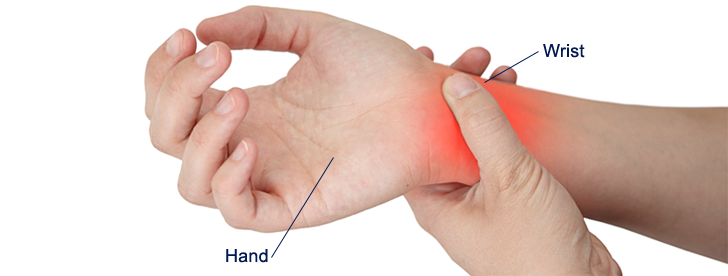Hand,Wrist,Upper Extremity & Peripheral Nerve Surgery

When it comes to treating hand and upper extremity injuries, the Joshi Hospital is home to one of the most advanced programs in the country. We give you every available treatment option, including non-surgical therapeutic interventions and the latest surgical approaches. Find out more about this specialty at a location near you.
We treat a wide range of issues affecting the fingers, hands, wrists, arms, elbows and shoulders. Our goal is to decrease pain and restore function as quickly and safely as possible.
Conditions Treated
We treat a wide variety of hand and upper extremity conditions, including:
- Soft tissue sprains
- Strains and contusions to the fingers, hands, wrists, arms and elbows
- Overuse and traumatic injuries to the hand, wrist, elbow and forearm
- Degenerative and rheumatoid arthritis
- Impingement syndromes of the elbow and wrist
- Carpal tunnel syndrome
- Wrist and hand fractures
- Hand and arm birth deformities
- Stiffness and pain caused by arthritis, pinched nerves and compressed blood vessels
Tests & Diagnosis
At the Orthopaedic Institute, we use sophisticated screening and diagnostic technologies that provide a precise and accurate diagnosis of hand and upper extremity problems.
Our diagnostic tests include:
- X-ray – A test that uses invisible electromagnetic energy beams to produce images on film of internal tissues, bones and organs.
- Ultrasound – A noninvasive diagnostic procedure that uses ultrasonic sound waves to assess soft tissue structures such as muscles, blood vessels and organs.
- MRI (Magnetic Resonance Imaging) – A diagnostic procedure that uses a combination of a large magnet, radiofrequencies and a computer to produce detailed images of organs, bones, joints and soft tissues within the body.
- CT Scan (Computed Tomography) – A noninvasive diagnostic imaging procedure that uses a combination of X-rays and computer technology to assess bones, soft tissues and joints for damage, lesions, fractures or other abnormalities, particularly when another type of examination, such as X-rays or physical examination are not conclusive.
- Fluoroscopy – During this test, a continuous X-ray beam is passed through the body part being examined and is transmitted to a TV-like monitor so that the body part and its motion can be seen in detail.
Our extensive treatment options include:
Non-surgical therapy – We first explore a variety of non-surgical therapeutic interventions to eliminate pain and restore normal function. In certain cases, medications can help to bring relief for hand and upper extremity problems.
Surgical therapy – When necessary, our specialists use advanced surgical techniques to treat common and complex hand and upper extremity problems. Their expertise ensures the best possible outcome from your treatment. As much as possible, we strive to use minimally invasive procedures, arthroplasty and microsurgery.
Advanced surgical options include:
- Nerve repair. When there is a gap in peripheral nerve injury and primary repair is not possible, our surgeons use a specially prepared allograft (tissue taken from another person) to correct the problem.
- Carpal tunnel release. To release pressure on the median nerve, our specialists offer a minimally invasive endoscopic and mini-open carpal tunnel release.
- Dupuytren’s contracture. We are at the forefront in using a special non-operative procedure to treat this connective tissue disorder that affects the palmar fascia of the hand.
- Shoulder replacement surgery. To replace cartilage that has worn away over the years, our surgeons remove parts of an arthritic or damaged joint, replacing it with an artificial joint. Shoulder replacement can eliminate pain and allow artificial joints to function just like normal, healthy joints.
Book Appointment Now
[ufbl form_id=”2″]



